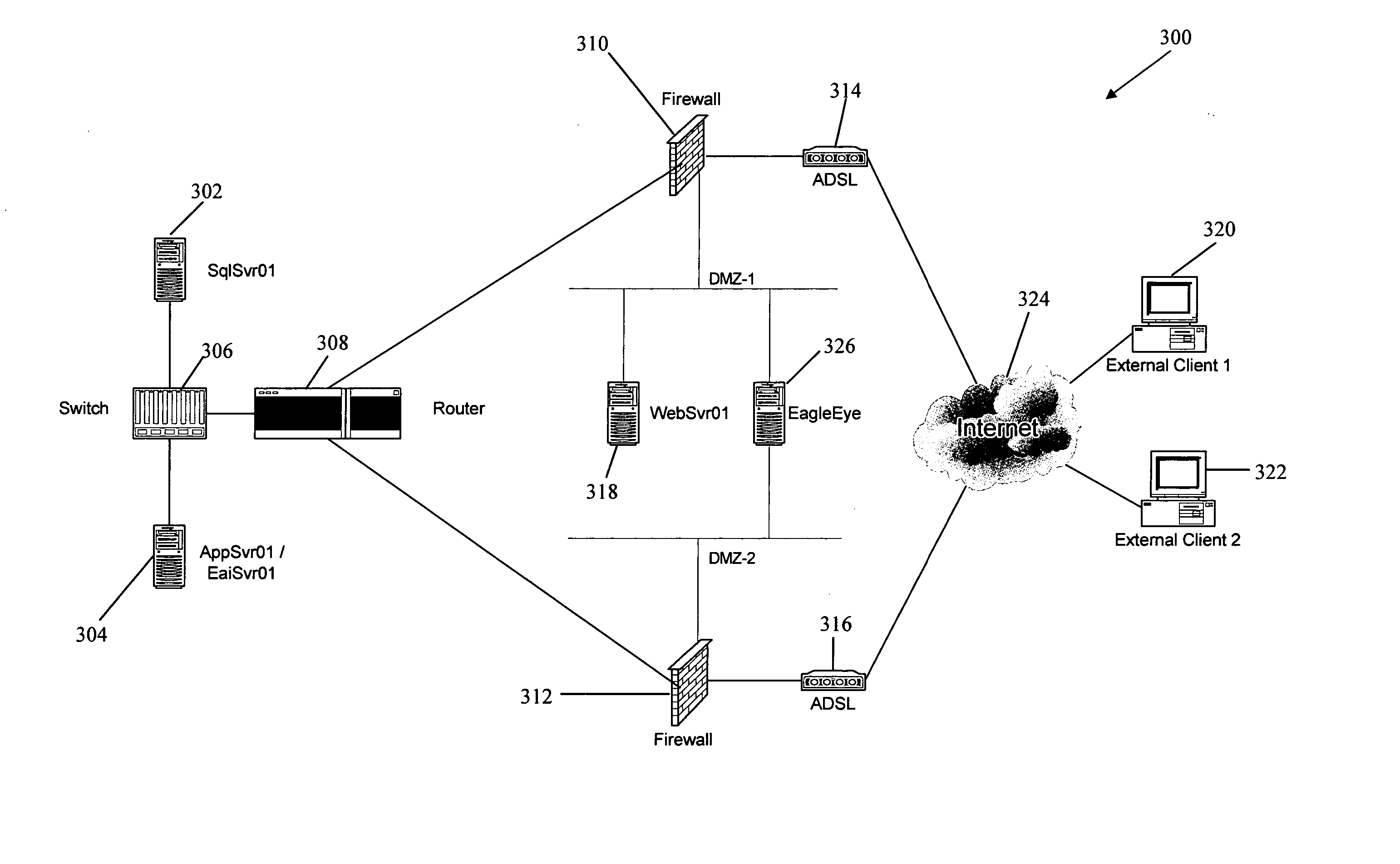Monitoring and mangement of distributing information systems
a distributed computer system and information system technology, applied in the field of distributed computer system management, can solve the problems of increasing complexity and difficulty in understanding and managing performance issues, reducing the degree of abstraction, and reducing the time, effort and corresponding cos
- Summary
- Abstract
- Description
- Claims
- Application Information
AI Technical Summary
Benefits of technology
Problems solved by technology
Method used
Image
Examples
Embodiment Construction
FIG. 1 shows a schematic diagram of the architecture 100 of a management system according to a preferred embodiment of the invention. The management system is managing a distributed computer system, represented in FIG. 1 by a collection of objects under management 102. The objects under management 102 typically include applications, computing resources, network resources, and encompass the software and hardware resources making up the system under management.
It is one function of the management system 100 to collect management information relevant to the performance of the information system from the objects under management 102. This management information typically consists of various performance metrics and other status data maintained by the resources in the system. In the preferred embodiment, the status data available from the objects under management 102 is referred to as Raw Element (RE) information, and is collected and stored in a Raw Elements database 104.
While the Raw...
PUM
 Login to View More
Login to View More Abstract
Description
Claims
Application Information
 Login to View More
Login to View More - R&D
- Intellectual Property
- Life Sciences
- Materials
- Tech Scout
- Unparalleled Data Quality
- Higher Quality Content
- 60% Fewer Hallucinations
Browse by: Latest US Patents, China's latest patents, Technical Efficacy Thesaurus, Application Domain, Technology Topic, Popular Technical Reports.
© 2025 PatSnap. All rights reserved.Legal|Privacy policy|Modern Slavery Act Transparency Statement|Sitemap|About US| Contact US: help@patsnap.com



